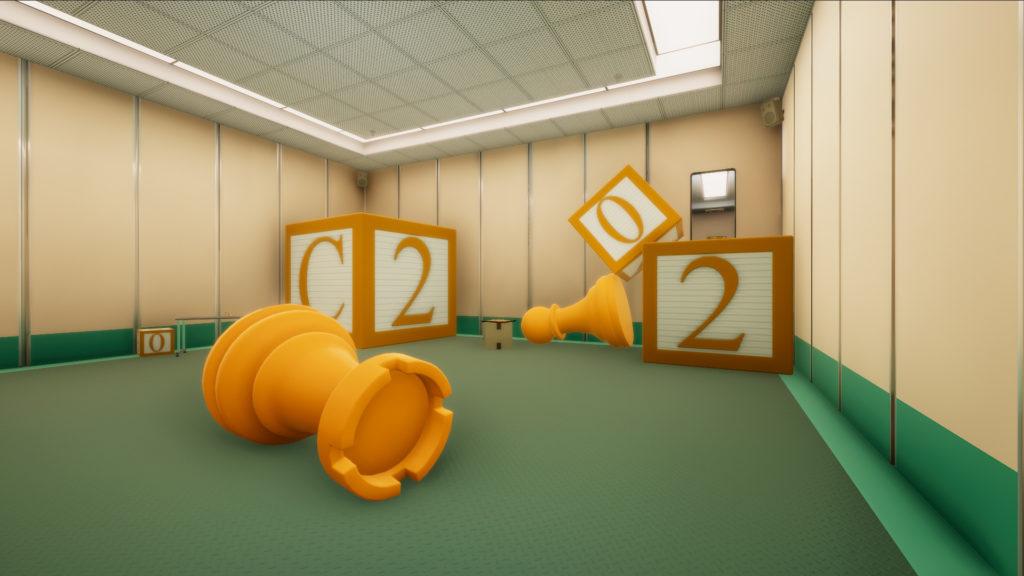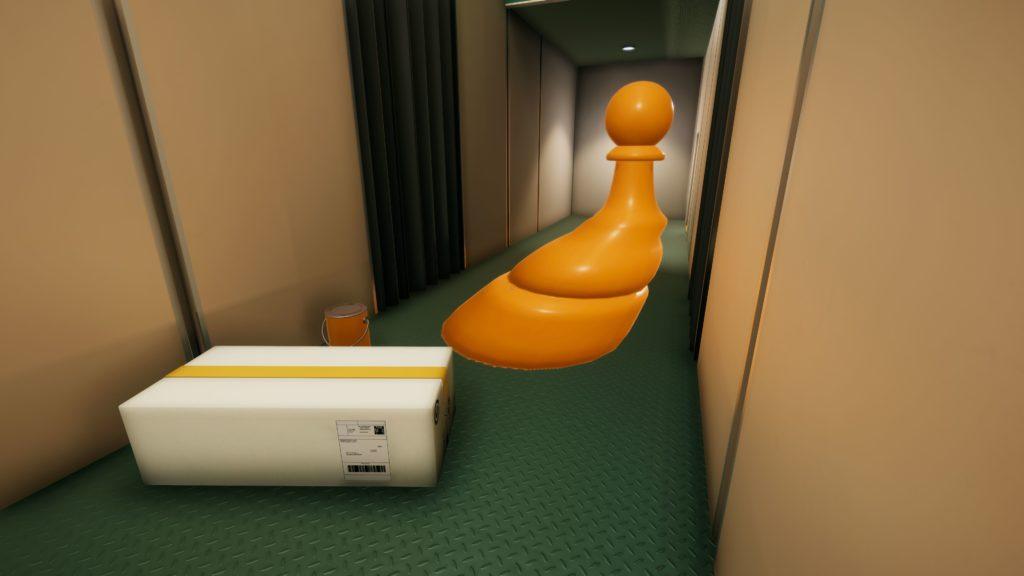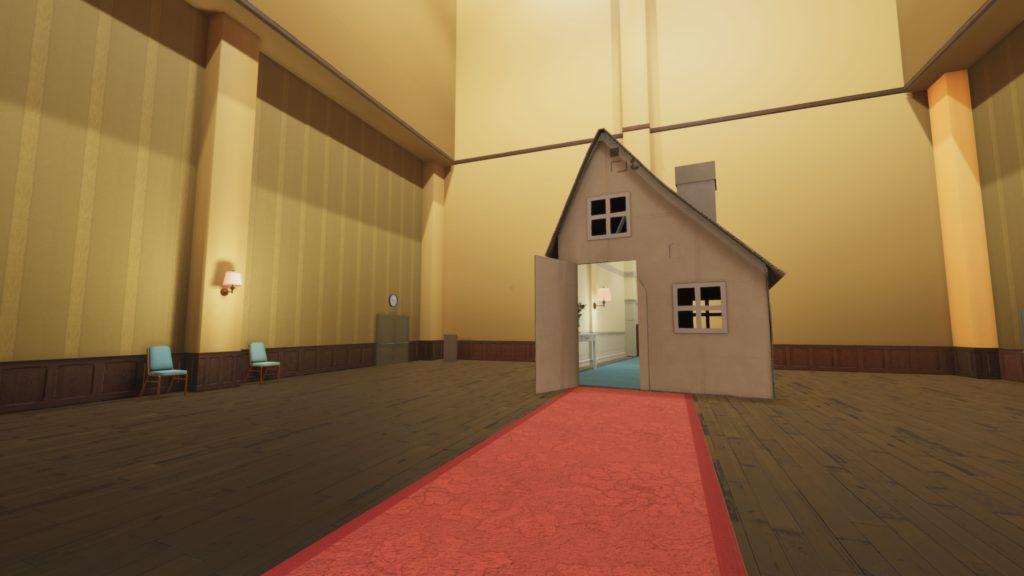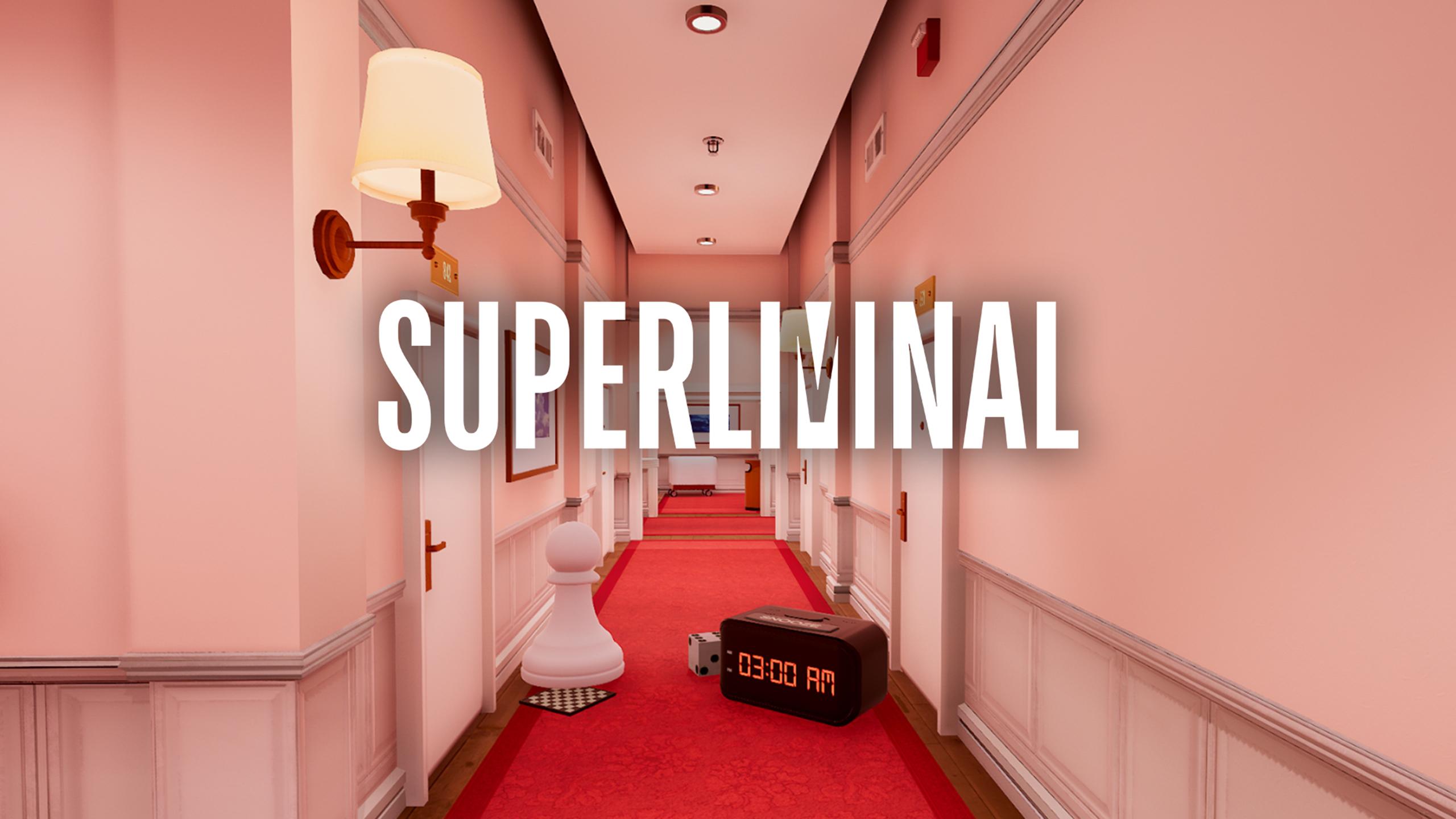Name of game, creator, and platform:
Superliminal is a single player, first-person puzzle game developed and published by Pillow Castle Games. I played the game on PC, but it is also available for MacOS, Linux, Microsoft Xbox One, PlayStation 4, and Nintendo Switch.
Target audience:
The target audience for Superliminal seems to be those who enjoy a decent narrative and not just a pure puzzle game. Some of the deeper narrative points and details may only stand out to an older audience (15+?).
Important formal elements:
Superliminal utilizes the concept of forced perception as its main game mechanic. The main objective of the game is to progress through a series of rooms, unraveling more of the story while solving some very surreal puzzles. The player’s main resources are the objects found in each room, which they can resize by picking up the object and releasing it at a different perspective point than the one they had originally picked it up at. In this way, the player can access hard to reach doors and ledges, create 3D objects from 2D objects, as well as some other interesting uses of forced perspective. The player is limited by the boundaries of each room in most cases, though they are encouraged to think and interact in a way that is “outside the box/room” in order to progress.

Types of fun:
The main types of fun I experienced while playing through Superliminal were foremostly challenge, and to a lesser degree, narrative. The puzzles are created in such a way that when you understand the solution you get an “Aha!” moment. Because most puzzles are self-contained within their rooms, nothing feels dragged out and the player experiences a fresh challenge with every step.

Moments of success or epic fails, and suggested changes:
Something that may not be immediately apparent but greatly improves the overall game experience are the crisp, delicious sound effects and appropriately themed backing track. These audio elements help to create an atmosphere that ties the puzzles to the narrative, and set the tone for various stages of the story.
Oddly enough, I did feel that Superliminal suffered from a rather predictable, lackluster story. There is so much potential for a psychological mind-bender as the story progresses, with the player losing more and more faith in the reality that they see (as they assume it’s just another puzzle). I would suggest keeping the same mechanics but changing the narrative to be more willing to take risks, make the player question their reality and sanity through inconsistencies and maybe even fourth wall breaks.

How do the mechanics of the puzzle influence the experience of the game?
As mentioned previously, the mechanics of Superliminal allow for sudden “Aha!” moments – the puzzles are challenging enough that a player feels like they made some sort of ingenious discovery when they successfully clear a room. When done well, the player experiences a series of satisfying moments of ingenuity. However, this is also Superliminal’s greatest downfall: if a player gets stuck, there are no hints or alternative ways to complete the puzzle other than just “getting it”.



